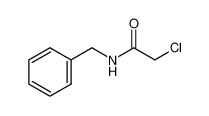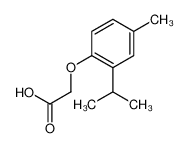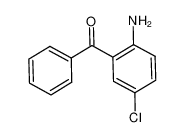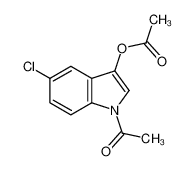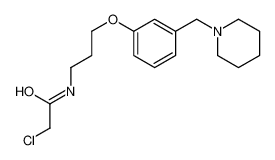1.Identification
1.1 GHS Product identifier
| Product name | chloroacetic acid |
|---|
1.2 Other means of identification
| Product number | - |
|---|---|
| Other names | Acetic acid,chloro |
1.3 Recommended use of the chemical and restrictions on use
| Identified uses | For industry use only. Chloroacetic acid is used in the manufacture of cellulose ethers (used mainly for drilling muds, detergents, food, and pharmaceuticals), as a post-emergence contact herbicide and defoliant, and in the manufacture of glycine and thioglycolic acid. Chloroacetic acid is also used in the manufacture of various dyes, synthetic caffeine, and organic chemicals. |
|---|---|
| Uses advised against | no data available |
1.4 Supplier's details
| Company | MOLBASE (Shanghai) Biotechnology Co., Ltd. |
|---|---|
| Address | Floor 4 & 5, Building 12, No. 1001 North Qinzhou Road, Xuhui District, Shanghai, China |
| Telephone | +86(21)64956998 |
| Fax | +86(21)54365166 |
1.5 Emergency phone number
| Emergency phone number | +86-400-6021-666 |
|---|---|
| Service hours | Monday to Friday, 9am-5pm (Standard time zone: UTC/GMT +8 hours). |
2.Hazard identification
2.1 Classification of the substance or mixture
Acute toxicity - Oral, Category 3
Acute toxicity - Dermal, Category 3
Skin corrosion, Category 1B
Acute toxicity - Inhalation, Category 3
Hazardous to the aquatic environment, short-term (Acute) - Category Acute 1
2.2 GHS label elements, including precautionary statements
| Pictogram(s) |    |
|---|---|
| Signal word | Danger |
| Hazard statement(s) | H301 Toxic if swallowed H311 Toxic in contact with skin H314 Causes severe skin burns and eye damage H331 Toxic if inhaled H400 Very toxic to aquatic life |
| Precautionary statement(s) | |
| Prevention | P264 Wash ... thoroughly after handling. P270 Do not eat, drink or smoke when using this product. P280 Wear protective gloves/protective clothing/eye protection/face protection. P260 Do not breathe dust/fume/gas/mist/vapours/spray. P261 Avoid breathing dust/fume/gas/mist/vapours/spray. P271 Use only outdoors or in a well-ventilated area. P273 Avoid release to the environment. |
| Response | P301+P310 IF SWALLOWED: Immediately call a POISON CENTER/doctor/… P321 Specific treatment (see ... on this label). P330 Rinse mouth. P302+P352 IF ON SKIN: Wash with plenty of water/... P312 Call a POISON CENTER/doctor/…if you feel unwell. P361+P364 Take off immediately all contaminated clothing and wash it before reuse. P301+P330+P331 IF SWALLOWED: Rinse mouth. Do NOT induce vomiting. P303+P361+P353 IF ON SKIN (or hair): Take off immediately all contaminated clothing. Rinse skin with water [or shower]. P363 Wash contaminated clothing before reuse. P304+P340 IF INHALED: Remove person to fresh air and keep comfortable for breathing. P310 Immediately call a POISON CENTER/doctor/… P305+P351+P338 IF IN EYES: Rinse cautiously with water for several minutes. Remove contact lenses, if present and easy to do. Continue rinsing. P311 Call a POISON CENTER/doctor/… P391 Collect spillage. |
| Storage | P405 Store locked up. P403+P233 Store in a well-ventilated place. Keep container tightly closed. |
| Disposal | P501 Dispose of contents/container to ... |
2.3 Other hazards which do not result in classification
none
3.Composition/information on ingredients
3.1 Substances
| Chemical name | Common names and synonyms | CAS number | EC number | Concentration |
|---|---|---|---|---|
| chloroacetic acid | chloroacetic acid | 79-11-8 | none | 100% |
4.First-aid measures
4.1 Description of necessary first-aid measures
General advice
Consult a physician. Show this safety data sheet to the doctor in attendance.
If inhaled
Fresh air, rest. Half-upright position. Artificial respiration may be needed. Refer immediately for medical attention.
In case of skin contact
Wear protective gloves when administering first aid. First rinse with plenty of water for at least 15 minutes, then remove contaminated clothes and rinse again. See Notes. Refer immediately for medical attention.
In case of eye contact
Rinse with plenty of water for several minutes (remove contact lenses if easily possible). Refer immediately for medical attention.
If swallowed
Rinse mouth. Do NOT induce vomiting. Refer immediately for medical attention. See Notes.
4.2 Most important symptoms/effects, acute and delayed
Inhalation causes mucous membrane irritation. Contact with liquid causes severe irritation and burns of the eyes and irritation and burns of skin. Ingestion causes burns of mouth and stomach. (USCG, 1999)
This material is very toxic. The probable lethal oral dose is 50-500 mg/kg of body weight, between one teaspoon and one ounce, for a 150 lb. person. Chloroacetic acid is irritating to the skin, cornea, and respiratory tract and causes burns. It may severely damage skin and mucous membranes. Ingestion may interfere with essential enzyme systems and cause perforation and peritonitis. Burns to skin result in marked fluid and electrolyte loss. Death may follow if more than 3% of the skin is exposed to this material. Other health hazards include central nervous system depression, and respiratory system depression. Persons with lung diseases are at greater risk. (EPA, 1998)
4.3 Indication of immediate medical attention and special treatment needed, if necessary
Immediate first aid: Ensure that adequate decontamination has been carried out. If patient is not breathing, start artificial respiration, preferably with a demand-valve resuscitator, bag-valve-mask device, or pocket mask, as trained. Perform CPR as necessary. Immediately flush contaminated eyes with gently flowing water. Do not induce vomiting. If vomiting occurs, lean patient forward or place on left side (head-down position, if possible) to maintain an open airway and prevent aspiration. Keep patient quiet and maintain normal body temperature. Obtain medical attention. /Organic acids and related compounds/
5.Fire-fighting measures
5.1 Extinguishing media
Suitable extinguishing media
This material is extremely hazardous to health, but fire fighters may enter areas with extreme care. Full protective clothing incuding a self-contained breathing apparatus, coat, pants, gloves, boots and bands around legs, arms and waist should be provided. No skin surface should be exposed. Move container from fire area if you can do so without risk. Spray cooling water on containers that are exposed to flame until well after fire is out. This chemical may burn but does not readily ignite. Use dry chemical, carbon dioxide, water spray, or alcohol or foam extinguishers. Poisonous gases including chlorine and phosgene. /SRP: are produced during thermal breakdown/. If materials or contaminated runoff enter waterways, notify downstream users of potentially contaminated waters. Notify local health and fire officials and pollution control agencies. From a secure, explosion-proof location, use water spray to cool exposed containers. If cooling streams are ineffective (venting sound increases in volume and pitch, tank discolors, or shows any signs of deforming), withdraw immediately to a secure position. If employees are expected to fight fires, they must be trained and equipped.
5.2 Specific hazards arising from the chemical
Special Hazards of Combustion Products: Toxic gases, such as hydrogen chloride, phosgene and carbon monoxide, may be generated. (USCG, 1999)
When heated to decomposition, it emits highly toxic fumes of phosgene and chlorides. Water may cause frothing if it gets below surface of the liquid and turns to steam. Flammable/poisonous gases may accumulate in tanks and hopper cars. Some of these materials may ignite combustibles, e.g., wood, paper, oil. It is corrosive to metals. Avoid heating. (EPA, 1998)
5.3 Special protective actions for fire-fighters
Wear self-contained breathing apparatus for firefighting if necessary.
6.Accidental release measures
6.1 Personal precautions, protective equipment and emergency procedures
Use personal protective equipment. Avoid dust formation. Avoid breathing vapours, mist or gas. Ensure adequate ventilation. Evacuate personnel to safe areas. Avoid breathing dust. For personal protection see section 8.
6.2 Environmental precautions
Evacuate danger area! Consult an expert! Personal protection: chemical protection suit including self-contained breathing apparatus. Do NOT let this chemical enter the environment. Do NOT wash away into sewer. Sweep spilled substance into covered containers. If appropriate, moisten first to prevent dusting. Carefully collect remainder. Then store and dispose of according to local regulations.
6.3 Methods and materials for containment and cleaning up
Stay upwind; keep out of low areas. Evacuate persons not wearing protective equipment from area of spill or leak until cleanup is complete. Neutralize spilled materials with crushed limestone, soad ash, or lime. Waste water containing chloroacetic acid can be treated with ammonia, ammonium salts, or amines followed by separation of suspended solids. Collect powdered material in the most convenient and safe manner and deposit in sealed containers. Dike large spills far ahead of spill for later disposal. Ventilate area of spill or leak after clean-up is complete. It may be necessary to contain and dispose of this chemical as a hazardous waste. If material or contaminated runoff enters waterways, notify downstream users of potentially contaminated waters. Contact your Department of Environmental Protection or your regional office of the federal EPA for specific recommendations. If employees are required to clean-up spills, they must be properly trained and equipped.
7.Handling and storage
7.1 Precautions for safe handling
Avoid contact with skin and eyes. Avoid formation of dust and aerosols. Avoid exposure - obtain special instructions before use.Provide appropriate exhaust ventilation at places where dust is formed. For precautions see section 2.2.
7.2 Conditions for safe storage, including any incompatibilities
Separated from incompatible materials and food and feedstuffs. See Chemical Dangers. Dry. Store only in original container. Well closed. Ventilation along the floor. Store in an area without drain or sewer access.Prior to working with chloroacetic acid you should be trained on its proper handling and storage. Store in tightly closed containers in a cool, well-ventilated area away from metals, combustibles, strong oxidizers, strong bases, and reducing agents. Where possible, automatically pump liquid from drums or other storage containers to process containers. Drums must be equipped with self-closing valves, pressure vacuum bungs, and flame arresters. Use only non-sparking tools and equipment, especially when opening and closing containers of this chemical. Sources of ignition such as smoking and open flames are prohibited where this chemical is handled, used, or stored in a manner that could create a potential fire or explosion hazard.
8.Exposure controls/personal protection
8.1 Control parameters
Occupational Exposure limit values
no data available
Biological limit values
no data available
8.2 Appropriate engineering controls
Handle in accordance with good industrial hygiene and safety practice. Wash hands before breaks and at the end of workday.
8.3 Individual protection measures, such as personal protective equipment (PPE)
Eye/face protection
Safety glasses with side-shields conforming to EN166. Use equipment for eye protection tested and approved under appropriate government standards such as NIOSH (US) or EN 166(EU).
Skin protection
Wear impervious clothing. The type of protective equipment must be selected according to the concentration and amount of the dangerous substance at the specific workplace. Handle with gloves. Gloves must be inspected prior to use. Use proper glove removal technique(without touching glove's outer surface) to avoid skin contact with this product. Dispose of contaminated gloves after use in accordance with applicable laws and good laboratory practices. Wash and dry hands. The selected protective gloves have to satisfy the specifications of EU Directive 89/686/EEC and the standard EN 374 derived from it.
Respiratory protection
Wear dust mask when handling large quantities.
Thermal hazards
no data available
9.Physical and chemical properties
| Physical state | white flakes |
|---|---|
| Colour | Monoclinic prisms |
| Odour | Characteristic penetrating odor similar to vinegar |
| Melting point/ freezing point | 197°C(lit.) |
| Boiling point or initial boiling point and boiling range | 189°C(lit.) |
| Flammability | Combustible. Gives off irritating or toxic fumes (or gases) in a fire. |
| Lower and upper explosion limit / flammability limit | Lower flammable limit: 8.0% by volume |
| Flash point | 113°C(lit.) |
| Auto-ignition temperature | Greater than 932 deg F (greater than 500°C). |
| Decomposition temperature | no data available |
| pH | no data available |
| Kinematic viscosity | 2.16 millipascal-sec at 70°C, 1.32 millipascal-sec at 100°C, 1.30 millipascal-sec at 130°C |
| Solubility | In water:SOLUBLE |
| Partition coefficient n-octanol/water (log value) | log Kow = 0.22 |
| Vapour pressure | 0.75 mm Hg ( 20 °C) |
| Density and/or relative density | 1.58 |
| Relative vapour density | 3.26 (vs air) |
| Particle characteristics | no data available |
10.Stability and reactivity
10.1 Reactivity
no data available
10.2 Chemical stability
Stable under recommended storage conditions.
10.3 Possibility of hazardous reactions
Combustible liquid when exposed to heat or flame.The vapour is heavier than air.These organic compounds donate hydrogen ions if a base is present to accept them. They react in this way with all bases, both organic (for example, the amines) and inorganic. Their reactions with bases, called "neutralizations", are accompanied by the evolution of substantial amounts of heat. Neutralization between an acid and a base produces water plus a salt. Soluble carboxylic acid dissociate to an extent in water to yield hydrogen ions. The pH of solutions of carboxylic acids is therefore less than 7.0. Carboxylic acids in aqueous solution and liquid or molten carboxylic acids can react with active metals to form gaseous hydrogen and a metal salt. Such reactions occur in principle for solid carboxylic acids as well, but are slow if the solid acid remains dry. Even "insoluble" carboxylic acids may absorb enough water from the air and dissolve sufficiently in it to corrode or dissolve iron, steel, and aluminum parts and containers. Carboxylic acids, like other acids, react with cyanide salts to generate gaseous hydrogen cyanide. The reaction is slower for dry, solid carboxylic acids. Flammable and/or toxic gases and heat are generated by the reaction of carboxylic acids with diazo compounds, dithiocarbamates, isocyanates, mercaptans, nitrides, and sulfides. Carboxylic acids, especially in aqueous solution, also react with sulfites, nitrites, thiosulfates (to give H2S and SO3), dithionites (SO2), to generate flammable and/or toxic gases and heat. Their reaction with carbonates and bicarbonates generates a harmless gas (carbon dioxide) but still heat. Like other organic compounds, carboxylic acids can be oxidized by strong oxidizing agents and reduced by strong reducing agents. These reactions generate heat. A wide variety of products is possible. Like other acids, carboxylic acids may initiate polymerization reactions; like other acids, they often catalyze (increase the rate of) chemical reactions.
10.4 Conditions to avoid
no data available
10.5 Incompatible materials
The solution in water is a strong acid. Contact with strong oxidizers, strong bases, and strong reducing agents can cause violent reactions.
10.6 Hazardous decomposition products
Hazardous decomposition products include oxides of carbon as well as ionic or oxidized chlorine.
11.Toxicological information
Acute toxicity
- Oral: LD50 Rat oral 76 mg/kg /Sodium salt/
- Inhalation: LC50 Rat inhalation 180 mg/cu m/4 hr /From table/
- Dermal: no data available
Skin corrosion/irritation
no data available
Serious eye damage/irritation
no data available
Respiratory or skin sensitization
no data available
Germ cell mutagenicity
no data available
Carcinogenicity
A4: Not classifiable as a human carcinogen.
Reproductive toxicity
No information is available on the reproductive or developmental effects of chloroacetic acid in humans or animals.
STOT-single exposure
no data available
STOT-repeated exposure
no data available
Aspiration hazard
no data available
12.Ecological information
12.1 Toxicity
- Toxicity to fish: LC50 Pimephales promelas (fathead minnow) 145 mg/L/96 hr; semi-static /From table
- Toxicity to daphnia and other aquatic invertebrates: EC50; Species: Daphnia magna (Water flea, age < or =24 hr); Conditions: freshwater, static, 25°C, pH > or =7.0, dissolved oxygen > or = 58%; Concentration: 96000 ug/L for 24 hr; Effect: intoxication, immobilization /formulated product
- Toxicity to algae: EC50; Species: Scenedesmus subspicatus (Green algae); Conditions: freshwater, static, 24°C, pH 8.0-9.3; Concentration: 28 ug/L for 48 hr; Effect: decreased population biomass /formulated product
- Toxicity to microorganisms: no data available
12.2 Persistence and degradability
AEROBIC: Chloroacetic acid, present at 100 mg/L, reached 65.0% of its theoretical BOD in 3 weeks using an activated sludge inoculum at 30 mg/L in the Japanese MITI test(1). The test was repeated under the assumption that the test substance inhibited the sludge because only 1 replicate of 2 showed biodegradation tendency(1). After 4 weeks, 2 out of 5 replicates had degraded more than 90%, while the remaining 3 replicates had degraded more than 60%(1). CO2 evolution was 14-24% and 73% of the theoretical amount possible at a chloroacetic acid concentration of 4.5 and 9.0 mg carbon/L, respectively, after a 7 day incubation with an activated sludge inoculum(2). Chloroacetic acid was completely degraded in the closed bottle test (at 5 mg/l), the Modified OECD Screening Test (at 5 mg C/L), and the Zahn-Wellens Test (at 1000 mg/L)(3). Chloroacetic acid is degraded in laboratory biodegradation tests using sewage or acclimated sludge inocula with greater than 70-90% degradation being reported in 5-10 days(4-7,9). Degradation is increased by acclimation(7,9) and involves dechlorination(7). Mineralization occurs in river water with 73% of the chemical being converted to carbon dioxide in 8-10 days at 29°C(8). The biodegradability of chloroacetic acid, at 10 ppm, was measured in both river water and seawater using the cultivation method; no biodegradation was reported for both samples after a 3 day incubation(10). Based on these results, this compound was determined to be difficult to degrade(10).
12.3 Bioaccumulative potential
An estimated BCF of 3.2 was calculated for chloroacetic acid(SRC), using a log Kow of 0.22(1) and a regression-derived equation(2). According to a classification scheme(3), this BCF suggests the potential for bioconcentration in aquatic organisms is low(SRC).
12.4 Mobility in soil
The Koc of chloroacetic acid is estimated as 31(SRC), using a log Kow of 0.22(1) and a regression-derived equation(2). According to a classification scheme(3), this estimated Koc value suggests that chloroacetic acid is expected to have very high mobility in soil. The pKa of chloroacetic acid is 2.87(4), indicating that this compound will primarily exist in the anion form in the environment and anions generally do not adsorb more strongly to soils containing organic carbon and clay than their neutral counterparts(5).
12.5 Other adverse effects
no data available
13.Disposal considerations
13.1 Disposal methods
Product
The material can be disposed of by removal to a licensed chemical destruction plant or by controlled incineration with flue gas scrubbing. Do not contaminate water, foodstuffs, feed or seed by storage or disposal. Do not discharge to sewer systems.
Contaminated packaging
Containers can be triply rinsed (or equivalent) and offered for recycling or reconditioning. Alternatively, the packaging can be punctured to make it unusable for other purposes and then be disposed of in a sanitary landfill. Controlled incineration with flue gas scrubbing is possible for combustible packaging materials.
14.Transport information
14.1 UN Number
| ADR/RID: UN1751 | IMDG: UN1751 | IATA: UN1751 |
14.2 UN Proper Shipping Name
| ADR/RID: CHLOROACETIC ACID, SOLID |
| IMDG: CHLOROACETIC ACID, SOLID |
| IATA: CHLOROACETIC ACID, SOLID |
14.3 Transport hazard class(es)
| ADR/RID: 6.1 | IMDG: 6.1 | IATA: 6.1 |
14.4 Packing group, if applicable
| ADR/RID: II | IMDG: II | IATA: II |
14.5 Environmental hazards
| ADR/RID: yes | IMDG: yes | IATA: yes |
14.6 Special precautions for user
no data available
14.7 Transport in bulk according to Annex II of MARPOL 73/78 and the IBC Code
no data available
15.Regulatory information
15.1 Safety, health and environmental regulations specific for the product in question
| Chemical name | Common names and synonyms | CAS number | EC number |
|---|---|---|---|
| chloroacetic acid | chloroacetic acid | 79-11-8 | none |
| European Inventory of Existing Commercial Chemical Substances (EINECS) | Listed. | ||
| EC Inventory | Listed. | ||
| United States Toxic Substances Control Act (TSCA) Inventory | Listed. | ||
| China Catalog of Hazardous chemicals 2015 | Listed. | ||
| New Zealand Inventory of Chemicals (NZIoC) | Listed. | ||
| Philippines Inventory of Chemicals and Chemical Substances (PICCS) | Listed. | ||
| Vietnam National Chemical Inventory | Not Listed. | ||
| Chinese Chemical Inventory of Existing Chemical Substances (China IECSC) | Listed. | ||
16.Other information
Information on revision
| Creation Date | Aug 12, 2017 |
|---|---|
| Revision Date | Aug 12, 2017 |
Abbreviations and acronyms
- CAS: Chemical Abstracts Service
- ADR: European Agreement concerning the International Carriage of Dangerous Goods by Road
- RID: Regulation concerning the International Carriage of Dangerous Goods by Rail
- IMDG: International Maritime Dangerous Goods
- IATA: International Air Transportation Association
- TWA: Time Weighted Average
- STEL: Short term exposure limit
- LC50: Lethal Concentration 50%
- LD50: Lethal Dose 50%
- EC50: Effective Concentration 50%
References
- IPCS - The International Chemical Safety Cards (ICSC), website: http://www.ilo.org/dyn/icsc/showcard.home
- HSDB - Hazardous Substances Data Bank, website: https://toxnet.nlm.nih.gov/newtoxnet/hsdb.htm
- IARC - International Agency for Research on Cancer, website: http://www.iarc.fr/
- eChemPortal - The Global Portal to Information on Chemical Substances by OECD, website: http://www.echemportal.org/echemportal/index?pageID=0&request_locale=en
- CAMEO Chemicals, website: http://cameochemicals.noaa.gov/search/simple
- ChemIDplus, website: http://chem.sis.nlm.nih.gov/chemidplus/chemidlite.jsp
- ERG - Emergency Response Guidebook by U.S. Department of Transportation, website: http://www.phmsa.dot.gov/hazmat/library/erg
- Germany GESTIS-database on hazard substance, website: http://www.dguv.de/ifa/gestis/gestis-stoffdatenbank/index-2.jsp
- ECHA - European Chemicals Agency, website: https://echa.europa.eu/




